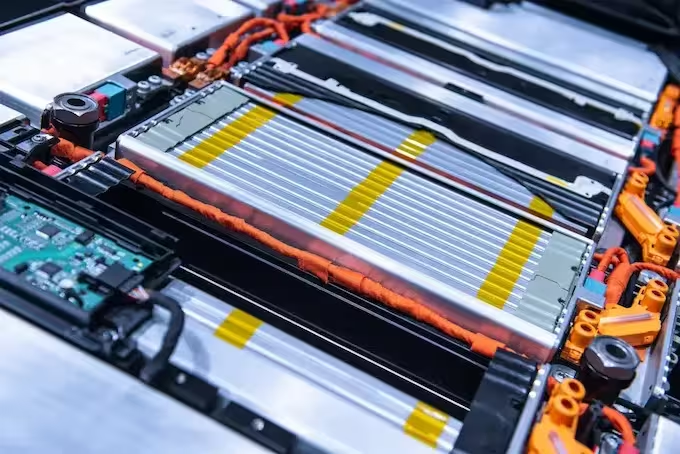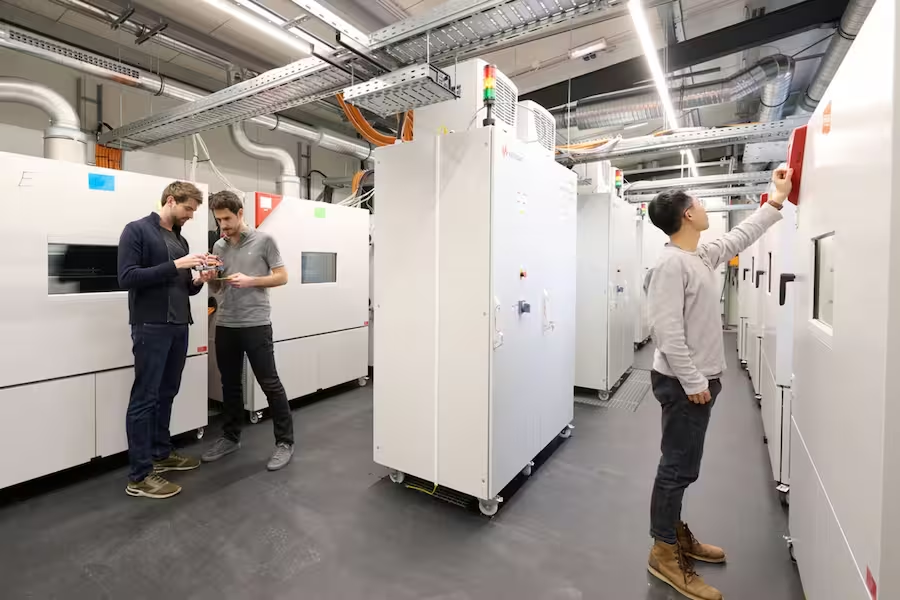Why do lithium-ion batteries age, and how to slow it down?
Electric vehicle batteries are costly and sensitive parts, and their performance depends on numerous factors like frequency of charge and discharge, the charging system, driving habits, and external temperature. Until now, it was almost impossible for developers or users of batteries to make any reliable analysis or statement about the current state of the device. However, this information can be now delivered by the digital twin created by TWAICE.

Battery technology in detail
The Munich-based company TWAICE has developed a digital twin for modern batteries. With this technology, electric cars last longer and can be better maintained.
Modern batteries in electric cars are expensive and sensitive parts. They constitute up to 50% of the total vehicle value. Every possibility to use this form of electricity storage better and longer can therefore translate into massive cost advantages. The performance and lifetime of batteries depend on numerous factors, for example the frequency of charge and discharge, the charging system, driving habits, but also external factors like temperature. Every Lithium-ion (Li-ion) battery ages correspondingly as it is used and loses storage capacity. In a vehicle, a battery is only used until the residual storage capacity reaches 70% of its initial value. After that point, the risk of non-linear aging grows. The inner resistance increases, the current can cut away and the car may unexpectedly stop. That is too risky, which is why an early swap of the old battery for a new, expensive one, is often preferred.
Depending on the operating strategy, i.e. the charge and discharge rates, the charging-window, or the charge and discharge depths, a battery which is used in a preserving way can, however, achieve longer lifetime and can be operated safely even with lower residual values storage capacity. Therefore, if the user were to know in detail the exact current state of its battery and could reliably predict the remaining lifetime, the battery could be used longer and more cost-efficiently.
For an optimal usage, it is therefore important not only to know the state of health of the battery at any given time, but also to identify the aging effects and to make reliable predictions about the remaining lifetime. The control of the fundamental aging mechanism is, however, highly complex. As mentioned previously, aging depends on diverse factors and is different and individual for each battery. Until now, it was almost impossible for developers or users of batteries to make any reliable analysis or statement about the current state of the device. Nowadays, this information can be delivered by a digital twin created by the TWAICE software. With the innovation of this tech company from Munich, it is finally possible to have a precise overview of the complex processes that take place in a Li-ion battery.
This digital twin is essentially a cloud-based, virtual copy of the actual battery. This model is fed with real-time usage data. In that way, the current condition of the battery is always known. With this knowledge, it is even possible to predict and optimize the future aging behavior for different charging and driving habits. It is therefore possible for battery developers and users to adjust to one another in order to achieve a better and longer usage of the battery in battery development.
Fully charged batteries, for example, age faster in high temperatures. However, by reducing the state of charge of the battery by only a few percent, unwanted deterioration is limited. The optimal state changes as the battery ages however and needs to be adapted to each battery pack individually using complex analytics. The system can be programmed accordingly using the digital twin technology. Fast charging, many charging cycles, a particularly sportive driving behavior, and extreme temperatures all create a great deal of stress for batteries. The digital twin recognizes these stress triggers and enables timely counter-measures. A premature aging of the battery is avoided.
The founders of TWAICE had already developed the foundations of their software during their Ph.D. research at the TU Munich. Today, their further-improved model comprises an empirical-analytical part and a data-based part. The empirical-analytical part of the model is set up based on laboratory measurements, once per battery type, prior to its usage in the field.
For the data-based part of the model, the data gathered by vehicle fleets in the field are used to generate an aging model with machine-learning algorithms. Only the combination of both parts of the model allows the high degree of prediction precision.
Batteries also age depending on the charging mode. There is always a risk that excessive quick charging of the battery pack will lead to degradation of capacity and power output of Li-ion cells within the pack. The digital twin can generate an individual charging curve for each and every charging cycle. Thanks to this, the battery is always charged with an optimal power throughput and the Lithium-ion cells are spared unnecessary stress. The same is valid for bi-directional charging. In this case the vehicle battery stores excess electricity during peak production and feeds it back in the grid by peak demand to stabilize it.
Such deliberately planned charging processes would be possible, since most vehicles stay put overnight, often at home, connected to the grid. In such a scenario, it is possible to precisely control the charging rate for the needs and benefits of the battery or the user. The software makes it possible to seamlessly integrate the vehicle battery pack in the home charging system. Thanks to the data from the digital twin, the user can choose the optimal charging strategy that fits in his usage window, or willingly go for a more aggressive charging process. This allows to achieve better range in less time if desired.
Moreover, the batteries can be better maintained and repaired based on the data generated by their digital twins and a so-called predictive maintenance becomes possible. For example, if a defect is identified in a cell, a notification is sent to the driver of the vehicle or to the fleet operator. The battery can then be repaired before failing or being permanently damaged.
The digital twin and the underlying algorithms are split into two software components: embedded software in the vehicle prepares the extensive measurement data and determines the current capacity and impedance of the battery. The now significantly compressed data is subsequently send to the second software component, the cloud platform, which updates the empirical- analytical part of the digital twin and then uses the aggregated dataset as training data for the machine-learning algorithms that power the data-based part of the model. This way, the cloud implementation enables so-called fleet-learning as well as central prediction and optimization of the lifetime performance of every single vehicle battery in the field.
About TWAICE
TWAICE supports enterprises across industries with predictive battery analytics software. TWAICE empowers their customers to develop and use battery systems more efficiently and sustainably while making them more reliable and durable. Precise predictions of battery conditions and aging significantly optimize battery development and use. Exact determination of current condition also enables certification of batteries for reuse and 2nd life. TWAICE was founded in 2018 as a spin-off from Technical University of Munich and is headquartered in Munich, Germany. The client base covers a vast array of industries ranging from e-scooters over automotive to stationary energy storage.
Sign up for the next live group demo and learn how TWAICE can transform your BESS operations. In just 30 minutes, you’ll get a demo of key features and use cases, and engage with our product experts for a live Q&A.


.avif)
.avif)

